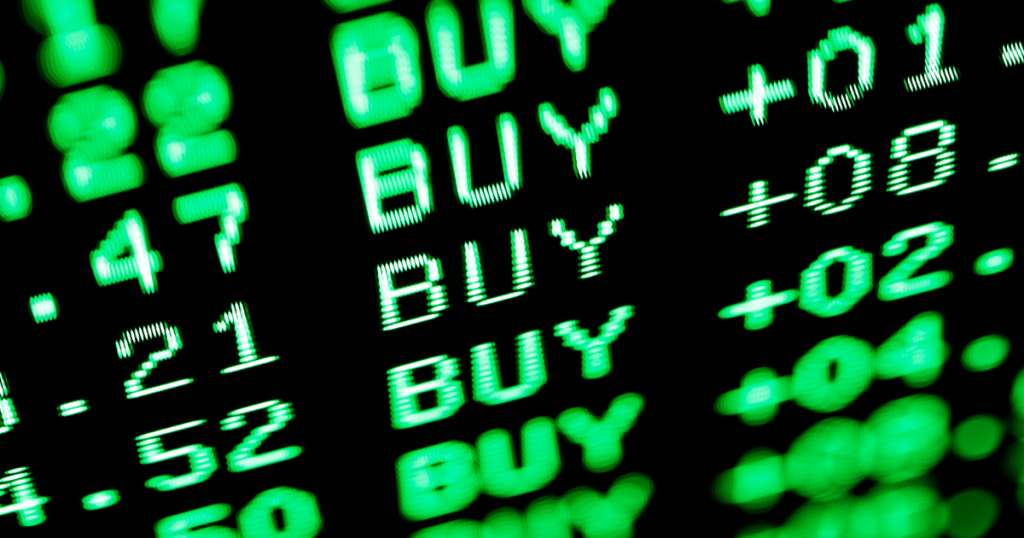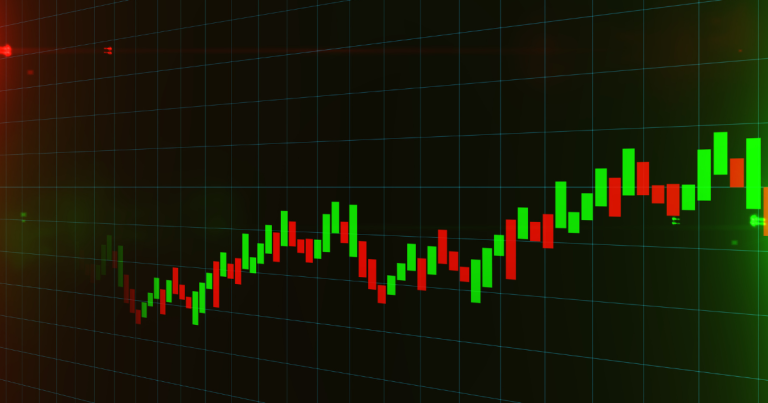
Getting the Hang of Moving Averages
Moving averages are like the secret sauce for stock traders. They smooth out price data to help spot trends over time. The two big players here are the Simple Moving Average (SMA) and the Exponential Moving Average (EMA).
Simple Moving Average (SMA)
The Simple Moving Average (SMA) is all about calculating the average price of a stock over a set period, usually using closing prices. This period can be as short or as long as you want, depending on your trading style.
How to Calculate and Tweak It
You can tweak the SMA by changing the number of time periods you use. The formula is pretty straightforward: add up the closing prices for a set number of days and then divide by that number of days.
For example:
| Time Period | Closing Price | Calculation |
|---|---|---|
| Day 1 | $100 | |
| Day 2 | $102 | |
| Day 3 | $104 | |
| Day 4 | $103 | |
| Day 5 | $105 | |
| SMA (5-Day) | ($100 + $102 + $104 + $103 + $105) / 5 = $102.8 |
What Makes SMA Tick
- Lag Indicator: It shows past trends based on old data, not future prices.
- Equal Weighting: Every price in the period gets the same weight.
- Smoothing Effect: Longer periods make the SMA line smoother.
Want to see how SMA stacks up against EMA? Check out our article on simple moving average vs exponential moving average.
Exponential Moving Average (EMA)
The Exponential Moving Average (EMA) is another popular tool that gives more weight to recent prices, making it quicker to react to new info.
How to Calculate and Why It’s Quick
The EMA uses a more complex formula with a multiplier to emphasize recent prices. This makes it more responsive to the latest price changes compared to the SMA.
| Time Period | Closing Price | Calculation |
|---|---|---|
| Day 1 | $100 | |
| Day 2 | $102 | |
| Day 3 | $104 | |
| Day 4 | $103 | |
| Day 5 | $105 | |
| EMA (5-Day) | Uses a smoothing factor to weight recent prices more heavily |
Why Traders Love EMA
- More Reactive: EMAs catch price changes faster, great for spotting short-term trends.
- Recent Prices Matter More: This makes EMA a go-to for traders who want to act on current market vibes.
- Smoother Trends: Even though it’s more reactive, the EMA still gives a smooth line for trend spotting.
For strategies using these indicators, check out our guide on exponential moving average crossover strategy or explore different moving average types.
By getting to know the ins and outs of SMA and EMA, traders can fine-tune their strategies to fit their needs and the market’s mood.
Why Moving Averages Matter
Spotting Price Trends
Moving averages are like the secret sauce for traders. They help you see the big picture by smoothing out the daily ups and downs of stock prices. Think of them as the GPS for your trading journey, showing you where the market is heading (Bankrate).
A Simple Moving Average (SMA) is pretty straightforward. It takes the average price of a stock over a set period, usually using closing prices. SMAs are great for quickly figuring out if a stock is on the rise or taking a nosedive (Investopedia).
| Time Period | Average Price Calculation |
|---|---|
| 5 days | (Day 1 + Day 2 + Day 3 + Day 4 + Day 5) / 5 |
| 10 days | (Day 1 + Day 2 + Day 3 + … + Day 10) / 10 |
| 50 days | (Day 1 + Day 2 + Day 3 + … + Day 50) / 50 |
Reading Market Shifts
Moving averages are also your go-to for understanding market shifts. They help you get a grip on a stock’s momentum, which is crucial for making smart trading moves. While Exponential Moving Averages (EMAs) give more weight to recent prices, making them quicker to react to changes, SMAs treat all prices equally.
Comparing short-term and long-term moving averages can give you a heads-up on market trends. For example, if a short-term moving average crosses above a long-term one, it might mean the stock is gearing up for a climb. On the flip side, if it crosses below, a drop could be on the horizon.
| Crossover Type | Signal |
|---|---|
| Short-term MA crosses above Long-term MA | Upward Trend |
| Short-term MA crosses below Long-term MA | Downward Trend |
Traders use moving averages to craft various trading strategies like the Death Cross and Golden Cross or Moving Average Crossovers. These strategies are all about watching how different moving averages interact to predict market moves and make savvy trades.
Grasping the importance of moving averages in spotting price trends and reading market shifts can seriously boost your trading game. For more on different types of moving averages and how to use them, check out resources on weighted average calculation and volume weighted average price.
Trading Strategies with Moving Averages
Moving averages are like the bread and butter of stock trading. They help you figure out where the market’s headed and when to jump in or bail out. Let’s break down two popular strategies: the Death Cross and Golden Cross, and Moving Average Crossovers.
Death Cross and Golden Cross
The Death Cross and Golden Cross are like the yin and yang of trading signals. They use simple moving averages (SMAs) to tell you when the market might be flipping its script. According to Investopedia, these patterns compare short-term and long-term SMAs.
Death Cross: This happens when the 50-day SMA dips below the 200-day SMA. Think of it as a storm warning—traders see this as a bearish signal, hinting at more losses.
Golden Cross: On the flip side, a Golden Cross occurs when the 50-day SMA climbs above the 200-day SMA. It’s like a sunny forecast, suggesting potential gains and a positive trend.
These patterns are loved for their straightforwardness and reliability in spotting big trend changes. For more on SMAs, check out our article on simple moving average vs exponential moving average.
| Strategy | Short-Term SMA | Long-Term SMA | Interpretation |
|---|---|---|---|
| Death Cross | 50-day | 200-day | Bearish Signal |
| Golden Cross | 50-day | 200-day | Bullish Signal |
Moving Average Crossovers
Another cool strategy is the Moving Average Crossover. This one’s all about how different moving averages, like the SMA and exponential moving average (EMA), interact. Crossovers matter because they show changes in momentum and hint at when to buy or sell.
Buy Signal: You get a buy signal when a shorter-term moving average (say, 20-day) crosses above a longer-term moving average (like 50-day). This means the trend’s going up, and it might be a good time to buy.
Sell Signal: A sell signal pops up when the shorter-term moving average crosses below the longer-term one, indicating a downward trend and a potential selling point.
Crossovers are great for spotting trend reversals and work on different time frames. For more on crossover strategies, check out our guide on the exponential moving average crossover strategy.
| Crossover Type | Short-Term MA | Long-Term MA | Signal |
|---|---|---|---|
| Buy Signal | 20-day | 50-day | Upward Trend |
| Sell Signal | 20-day | 50-day | Downward Trend |
Moving average strategies aren’t just about SMAs and EMAs. You can also use other types like the weighted moving average (WMA) and the moving median. By getting the hang of these strategies, you can make smarter trading moves and boost your results. For more on time frames and moving averages, check out our article on time frame selection.
Types of Moving Averages
Getting a grip on the different types of moving averages can really up your game when it comes to moving average trading strategies. Here, we’ll break down the Weighted Moving Average (WMA) and the Moving Median.
Weighted Moving Average (WMA)
A Weighted Moving Average (WMA) gives more weight to recent data points, making it quicker to react to new info than a Simple Moving Average (SMA). Think of it like giving more attention to the latest gossip rather than old news.
In finance, the weights in a WMA drop in a simple pattern. For instance, in a 5-day WMA, the most recent day might get a weight of 5, the day before that a 4, and so on until the oldest day gets a 1. This is handy for traders who want an average that keeps up with the latest price changes.
Table: Example of Weighted Moving Average Calculation
| Day | Price | Weight | Weighted Price |
|---|---|---|---|
| 1 | $100 | 1 | $100 |
| 2 | $102 | 2 | $204 |
| 3 | $104 | 3 | $312 |
| 4 | $106 | 4 | $424 |
| 5 | $108 | 5 | $540 |
| Total | – | 15 | $1580 |
To calculate the WMA:
WMA = Total Weighted Price Total Weights = 1580 15 = 105.33For more details on the math, check out our guide on weighted average calculation.
Moving Median
The Moving Median is like the cool cousin of the moving average. It’s tougher against extreme values and sudden shocks. Instead of averaging all the values, it sorts them and picks the middle one (Wikipedia).
This method shines in wild markets where sharp, short-term price jumps can mess up the trend. It’s like having a steady hand in a storm.
Table: Example of Moving Median Calculation
| Day | Price |
|---|---|
| 1 | $100 |
| 2 | $120 |
| 3 | $110 |
| 4 | $130 |
| 5 | $115 |
For the 5-day period, the sorted prices are: $100, $110, $115, $120, $130. The median price is $115.
The Moving Median is great for traders who need a stable trend indicator that doesn’t get thrown off by outliers. For more on how to use different moving averages in trading, check out our section on implementing moving averages in trading.
By getting to know these types of moving averages, traders can sharpen their strategies and handle the ups and downs of stock trading better. Dive into our articles on exponential moving average crossover strategy and volume weighted average price for more tips.
Practical Uses of Moving Averages
Moving averages aren’t just for stock trading. They’re like the Swiss Army knife of trading tools, helping traders manage risks and analyze market conditions across various financial landscapes.
Beyond Stock Trading
Moving averages are handy in more than just the stock market. They’re used in:
- Bond Market: Spotting trends and making smart decisions about buying or selling bonds.
- Economic Data: Smoothing out economic data to see long-term trends more clearly.
- Real Estate: Tracking housing market trends and property prices.
- Portfolio Management: Keeping portfolios balanced and performing well.
- Market Sentiment: Gauging the overall mood of the market by analyzing its direction.
Want to dive deeper into different types of moving averages? Check out our article on moving average types.
Risk Management and Analysis
In trading, moving averages are like a trader’s best friend. They help with:
- Spotting Trends: Identifying the current market direction. They can act as dynamic support and resistance levels.
- Trading Signals: Using different time periods together to generate buy and sell signals. This is super useful in strategies like the exponential moving average crossover strategy.
- Confirming Prices: Making sure price movements are reliable before acting.
- Managing Risks: Setting stop-loss orders and keeping an eye on market conditions to reduce risks (Investopedia).
| Application | What It Does |
|---|---|
| Trend Spotting | Identifies market trends |
| Signal Generation | Creates buy and sell signals using different time periods |
| Price Confirmation | Ensures price actions are reliable |
| Risk Management | Helps set stop-loss orders and monitor market conditions |
But remember, moving averages have their quirks. They’re based on past data, so they might not always give timely signals for fast market changes. Plus, they can throw out false signals during choppy or range-bound markets (Investopedia).
For more tips on moving average strategies, check out our articles on time frame selection and simple moving average vs exponential moving average.
Implementing Moving Averages in Trading
Moving averages are like the Swiss Army knife for traders, helping them spot market trends and make smart moves. Here, we’ll break down Simple Moving Averages (SMA) and Exponential Moving Averages (EMA), show you their perks, and introduce a killer trading strategy.
SMA vs. EMA
A Simple Moving Average (SMA) is pretty straightforward. It takes the average price of an asset over a set period, usually using closing prices. Each price point gets the same weight, making SMAs easy to understand but a bit slow to react to price swings (Investopedia).
On the flip side, an Exponential Moving Average (EMA) puts more weight on recent prices, making it quicker to respond to changes. This makes EMAs a favorite for traders who want to catch trends early.
| Moving Average Type | Calculation | Reactivity | Use Case |
|---|---|---|---|
| Simple Moving Average (SMA) | Equal weighting of all data points | Slower reaction to price changes | Spotting long-term trends |
| Exponential Moving Average (EMA) | Higher weighting to recent prices | Faster reaction to price changes | Short-term trading |
Want to dig deeper? Check out simple moving average vs exponential moving average.
SMA Crossover Strategy
One popular way to use SMAs is the SMA Crossover Strategy. This involves two SMAs: a short-term one and a long-term one. The idea is to buy or sell based on when these two lines cross.
- Picking Time Frames: Traders often use a 50-day SMA for short-term trends and a 200-day SMA for long-term trends.
- Buy Signal: When the short-term SMA crosses above the long-term SMA, it hints at an upward trend, signaling a buy.
- Sell Signal: When the short-term SMA crosses below the long-term SMA, it suggests a downward trend, signaling a sell.
| Signal Type | Condition | Action |
|---|---|---|
| Buy Signal | Short-term SMA > Long-term SMA | Buy |
| Sell Signal | Short-term SMA < Long-term SMA | Sell |
You can tweak this strategy by adjusting the time frames to match your trading style and market conditions. For more tips on picking the right time frames, visit time frame selection.
Using the SMA Crossover Strategy means keeping an eye on the market and using stop-loss orders to manage risk (Investopedia). This way, you can ride the trends while keeping potential losses in check.
If you’re curious about other moving average strategies, like the exponential moving average crossover strategy, getting a handle on different moving averages will help. Plus, tools like the moving average convergence divergence can give you even more insights into market trends.








great stuff, really helpful. i’m going to try using sma to find some good entry points in the market. wish me luck!
this post is a lifesaver, i was so lost on how to calculate sma. now i can finally put it into practice!
This is a great starting point for understanding moving averages Im new to this stuff but the explanation is clear and easy to follow
Simple and to the point, just what I needed. I’m gonna use this to help my trading strategy. Let’s see if it works!
I’ve always struggled with EMA, but this post made it so much easier to grasp. Thanks!